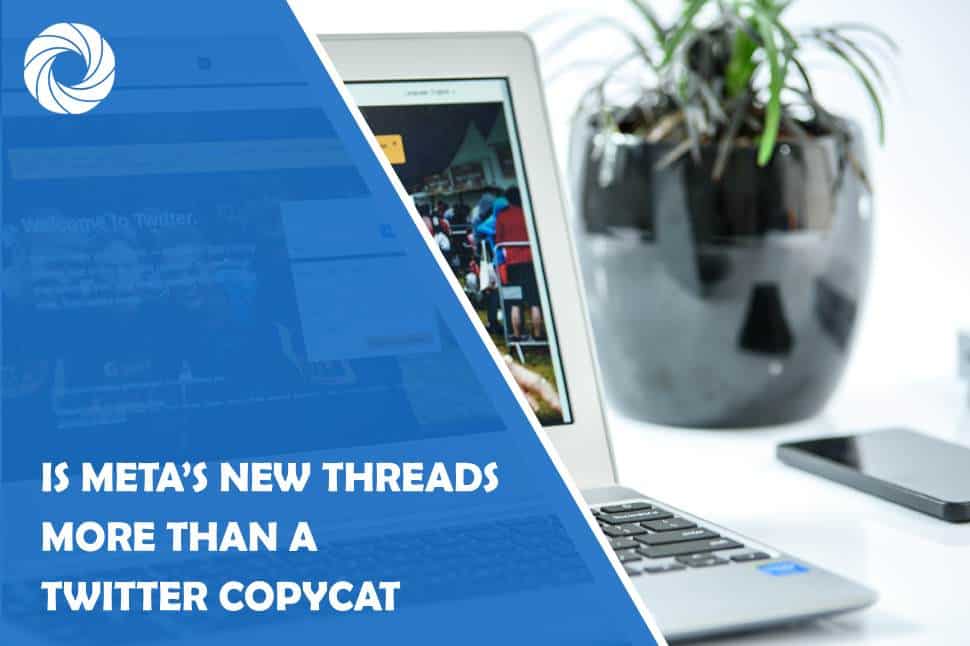Meta, the company formerly known as Facebook, has unveiled its latest social media platform, Threads. With its microblogging format and focus on real-time conversations, Threads has drawn comparisons to Twitter. But is Threads more than just a Twitter copycat? In this article, we'll delve into the features, intentions, and potential innovations of Threads to determine if it offers a fresh perspective or if it's simply a mimicry of Twitter.
The Microblogging Concept
Threads introduce a microblogging concept similar to Twitter's core functionality. Users can create short posts, known as “Threads,” that provide quick insights, updates, and thoughts. These posts are limited in character count, promoting concise communication and swift engagement.
Core Similarities
1. Brevity in Communication: Both Threads and Twitter excel in providing bite-sized pieces of information. The character limits encourage users to express their ideas succinctly and grab attention quickly.
2. Real-time Public Conversations: Threads, like Twitter, emphasizes real-time public conversations. Users can engage with posts, join discussions, and stay updated on trending topics.
3. Hashtags and Categorization: Both platforms employ hashtags to categorize content. This feature aids users in discovering conversations related to specific topics, enabling a broader scope of engagement.
The Copycat Debate
At first glance, Threads appears to mirror Twitter's structure closely. This similarity has led to accusations of being a mere copycat, with critics suggesting that Meta is attempting to replicate Twitter's formula for success. However, beneath the surface, Threads introduces some distinct features that could set it apart.
Key Distinctions
1. Trend Emphasis: Threads places a notable emphasis on trends and current topics. The platform highlights trending conversations, making it easier for users to join ongoing discussions and engage with popular hashtags.
2. Audio Integration: Threads goes beyond Twitter's audio features by allowing users to include audio snippets in their posts. This inclusion enhances the multimedia experience and provides creators with an additional means of connecting with their audience.
3. Visual Engagement: The visual component of Threads is pronounced, allowing users to attach images and GIFs to their posts. This approach enhances the engagement potential by offering a more visually immersive experience compared to Twitter's text-centric model.
4. Enhanced Profiles Threads introduces more comprehensive user profiles complete with bios and images. This focus on profiles encourages users to view profiles as an integral part of the conversation, fostering deeper connections.
5. Monetization and Creator Tools: Threads enables creators to monetize their content through premium subscriptions. This approach expands revenue streams beyond traditional advertising, potentially attracting a diverse range of content creators.
Beyond Imitation
While Threads shares some similarities with Twitter, it's essential to acknowledge that social media platforms often evolve by incorporating successful features and adapting them to their unique audience and goals. Threads' emphasis on trends, audio integration, visual engagement, and creator tools demonstrates Meta's attempt to put its own spin on the microblogging model.
Innovation Through Inspiration
It's important to recognize that social media platforms are interconnected and often learn from each other's successes and missteps. The launch of Threads might signify not only a replication of Twitter but also an innovation in response to evolving user preferences and digital landscapes.
The question of whether Threads is merely a Twitter copycat cannot be answered in absolutes. Threads' inspiration from Twitter's microblogging model is evident, but it introduces several key differences that set it apart. The platform's emphasis on trends, audio integration, visual engagement, creator monetization, and enhanced profiles showcases Meta's efforts to create a unique experience within the microblogging realm.
As social media platforms continue to evolve, they learn from one another, adopting effective features and adapting them to cater to user demands. Threads' launch could signify a blend of inspiration and innovation, with Meta aiming to create a distinctive space for users seeking a new perspective on microblogging.
Ultimately, Threads' success as a potential competitor to Twitter will hinge on its ability to attract and retain users who value its unique offerings. In a digital landscape where platforms aim to stand out while drawing lessons from their predecessors, those that can strike the right balance between familiarity and innovation are poised to thrive.
